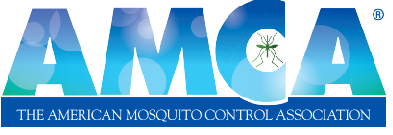First Record of Aedes albifasciatus in Magallanes Region, Chile
Aedes albifasciatus is known for transmitting western equine encephalomyelitis (WEE), a virus that can affect humans and animals. In this work, we record for the first time Ae. albifasciatus from the Magallanes Region in Chile, as the only culicid species known from this southernmost region. Although WEE poses a serious problem to cattle production in neighboring Argentina, no WEE has been recorded in Chile. The need for surveillance programs of WEE in Magallanes is also discussed here.ABSTRACT
Culicidae is a family of mosquitoes that contains more than 3,600 species distributed worldwide except for the Antarctica. This family is commonly known by the genera Culex, Aedes and Anopheles, which are vectors of pathogenic arboviruses, nematodes, and protists. Specifically, the genus Aedes contains species which vectors several arboviruses such as dengue, West Nile, yellow fever, chikungunya, Zika virus, and western equine encephalitis (WEE) (Wilkerson et al. 2015). In Chile, there are 3 species of this genus, Aedes albifasciatus (Macquart), Ae. sallumae González and Reyes, and Ae. aegypti Linnaeus (González et al. 2005). Species in the tribe Aedini have been under several taxonomic changes, especially those in Ochlerotatus, which have been moved between full generic or subgeneric ranks. Recently, though, Wilkerson et al. (2015) restored the classification and structure of the tribe, leaving Ochlerotatus as a subgenus of Aedes.
Aedes albifasciatus (Figs. 1 and 2) is distributed in Brazil, Bolivia, Argentina, Chile, Paraguay, and Uruguay (Walter Reed Biosystematics Unit 2018). In Chile, this species is found from the Metropolitan Region to the Los Lagos Region (González et al. 2005). The sites of reproduction of this species tend to be in natural or artificial water ponds (Ludueña and Gorla 1995). Females lay eggs in the mud surrounding ponds. After flooding, during summer and fall, larvae emerge or diapause (Ludueña and Gorla 1995). Aedes albifasciatus has been found breeding under adverse environmental conditions such as highlands or high-saline water (Duret 1954, Bachman and Casal 1962) and has been reported as a competent vector of WEE (Avilés et al. 1992). The objective of this work was to report for the first time Ae. albifasciatus from Magallanes Region, Chile. For identification, we followed the identification keys and diagnostic comments provided by González et al. (2016, 2017). For generic and subgeneric abbreviations we followed Reinert (2001).



Citation: Journal of the American Mosquito Control Association 34, 2; 10.2987/18-6744.1



Citation: Journal of the American Mosquito Control Association 34, 2; 10.2987/18-6744.1
Material examined was from the following locations in the Magallanes Region of Chile: Última Esperanza Province: Parque Nacional Torres del Paine, Laguna Amarga, 25-I-1981, J. Petersen leg. 3♀1♂; Estancia Paine, 16-II-78, R. Trincado leg. 1♂; Tierra del Fuego Province: South of Porvenir, 12-I-1989, R. Gomez leg. 1♀; Provincia de Magallanes: San Juan, 11-II-1991, 2♀ J. Coronado leg. (All material was deposited in the Collection of the Instituto de la Patagonia, Universidad de Magallanes.)
Locality descriptions are as follows: Laguna Amarga, 51°00′S, 72°48′W, shrubland landscape around a saline lagoon, with abundant freshwater rivers; Estancia Paine, 51°02′S, 73°00′W, shrubland landscape with abundant water crops, including ponds and rivers; Porvenir, 53°18′S, 70°22′W, transition zone between steppe and Nothofagus (Nothofagaceae) forests; Rio San Juan, 53°38′S, 70°56′32W, Magellanic rainforest of Nothofagus betuloides (Mirb.) Oerst., with abundant creeks and temporary ponds.
The records here filled the distributional gap between the southern tip of Chile and Argentinean Patagonia. Although there are no previous records of Ae. albifasciatus in Magallanes (Angulo and Olivares 1993, González et al. 2005), it is highly probable that the absence of this species in literature reports from Magallanes was only due to collection issues. The seasonality of this species plus its high abundance on Argentinean Tierra del Fuego (Burroni et al. 2013) seems to confirm this hypothesis.
Western equine encephalitis is a single-stranded RNA virus (Hahn et al. 1988) primarily transmitted by Culex tarsalis Coquillet in the Northern Hemisphere (Zacks and Paessler 2010); it infects mainly birds with horses and humans as dead-end hosts. The virus causes inflammation of the brain and in some cases, the meninges, which in horses can be fatal. In humans, however, it causes flu-like symptoms and, less often, inflammation of the brain (Zacks and Paessler 2010).
In Argentina, Ae. albifasciatus is the major vector of WEE, and the population of this species has grown tremendously, especially after flooding in plain areas, thus causing serious problems to both humans and cattle (Avilés et al. 1992).
This record of Ae. albifasciatus is the southernmost extension in Chile, where currently WEE is not present (SAG 2011), and because of the absence of culicids, Magallanes Region is out of the surveillance programs. However, the virus is present in Argentina (Acha and Szyfres 2003). Magallanes Region is contiguous to both Santa Cruz and Tierra del Fuego provinces in Argentina, there is not a natural barrier such as the Andes mountains, which isolate most of the Chilean regions from the rest of the continent. This absence of barriers has facilitated the transport of several arthropods of medical and veterinary importance between these localities (Faúndez and Carvajal 2014, Faúndez et al. 2017), therefore making surveillance for WEE necessary in Magallanes, as well as monitoring Ae. albifasciatus populations, as animal production and tourism are among the main economic activities within this region.

Aedes albifasciatus from Torres del Paine, Chile. Female, lateral view.

Aedes albifasciatus from Torres del Paine, Chile. Male, lateral view.
